Technology
DraftKings, FanDuel Interested in Sports ‘Prediction’ Markets
DraftKings, FanDuel Interested in Sports ‘Prediction’ Markets Privacy Manager Link 7

Technology
All Sessions Now Available to Watch on SVG PLAY
Breaking down the topics most relevant to those working in this rapidly-changing segment of the sports media industry The SVG Regional Sports Production Summit visited Chicago last month bringing RSN and local sports media leaders together to discuss the challenges and opportunities ahead for this rapidly evolving sector of the industry. This annual event covered […]
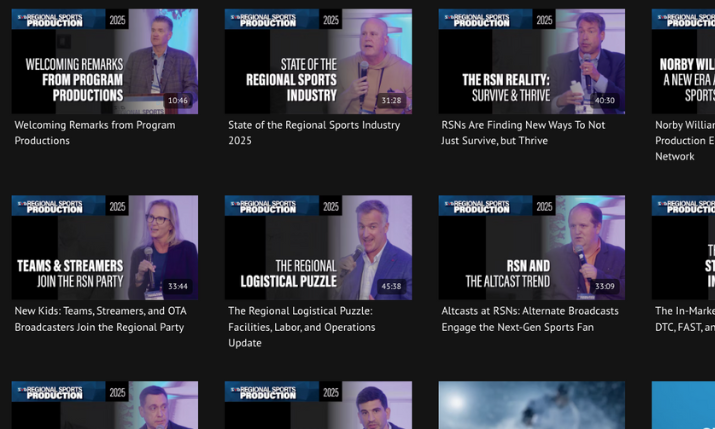
Breaking down the topics most relevant to those working in this rapidly-changing segment of the sports media industry
The SVG Regional Sports Production Summit visited Chicago last month bringing RSN and local sports media leaders together to discuss the challenges and opportunities ahead for this rapidly evolving sector of the industry. This annual event covered the latest developments in live-production workflows, direct-to-consumer (DTC) and authenticated streaming, alternate broadcasts, next-gen technologies, labor and crewing, league and team relationships, and more.
Now you can watch all sessions from the event now on SVG PLAY.

For the event’s full lineup, CLICK HERE.
Featured Conversations & Welcoming Remarks
– Norby Williamson on a New Production Era for FanDuel Sports Network
– State of the Regional Sports Industry 2025
– Welcoming Remarks from Program Productions
Panel Discussions
– RSNs Are Finding New Ways To Not Just Survive, but Thrive
– New Kids: Teams, Streamers, and OTA Broadcasters Join the Regional Party
– Altcasts at RSNs: Alternate Broadcasts Engage the Next-Gen Sports Fan
– The In-Market Streaming Age Arrives: DTC, FAST, and Authenticated Apps
– The Regional Logistical Puzzle: Facilities, Labor, and Operations Update
Tech Focus
– Tech in Action: The Latest Innovations Impacting Regional Sports Production
– Marquee Sports Network Creates High-Impact DTC Streaming Service With MediaKind
Technology
‘We’re a technology company’: Oakley’s Caio Amato on designing with Meta, Prada and astronauts
It’s been a while since we heard a fashion brand call itself a tech company. Such headlines disappeared around the same time that brands’ priorities shifted away from experiments with new tech, like Web3, and back to the bottom line. But when your sights are set on going to space, technical performance is going to […]

It’s been a while since we heard a fashion brand call itself a tech company. Such headlines disappeared around the same time that brands’ priorities shifted away from experiments with new tech, like Web3, and back to the bottom line. But when your sights are set on going to space, technical performance is going to play a significant role.
“We’re a technology company, no doubt about it,” Oakley’s global president, Caio Amato, tells Vogue Business in an interview. “Our offices are full of scientists; what we do is science wrapped in art. Technological research and development are at the foundation of everything we do.”
Technology
NBA’s Summer League A Hot Bed of AI, Immersive Innovation Testing
The NBA Summer League is into its final week and with it the last few days when the NBA teams get a chance to evaluate rookie and young talent and when the media operations and technology team can test out new production gear, workflows, and more. “Summer League is one of our key opportunities to […]
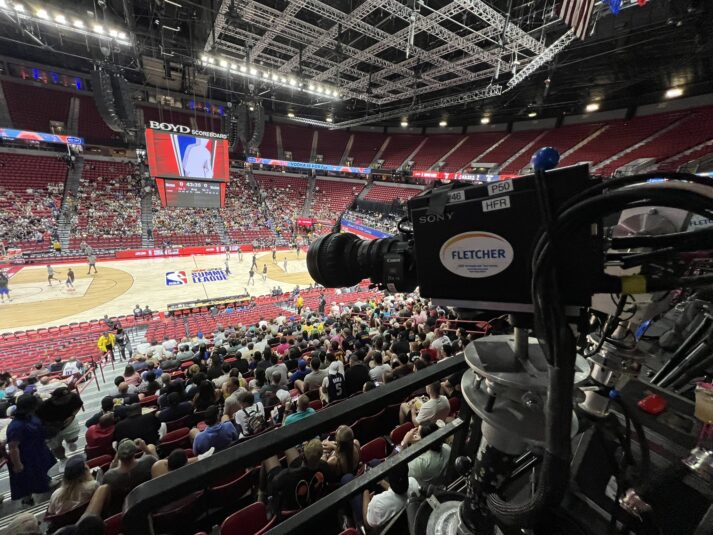
The NBA Summer League is into its final week and with it the last few days when the NBA teams get a chance to evaluate rookie and young talent and when the media operations and technology team can test out new production gear, workflows, and more.
“Summer League is one of our key opportunities to really push boundaries of innovation, and we’re always thinking about how we can set ourselves up for future success alongside our partners,” says Ken DeGennaro, NBA, EVP, Media Operations and Technology. Among the highlights this year for the NBA is experimenting with multiple avenues of AI workflows that can not only consume and understand our very data enriched video feeds but also react and augment.
“All of this is still in the early stages, but being able to quickly contextualize and respond to live moments will be a true gamechanger for our content teams,” he says. “Our broadcast engineering team has been leading the charge on these initiatives, and we’re excited about the possibilities.”
Among the efforts are AI-driven event detection to audio mixing powered by EDGE Sound Research as well as intelligent camera framing through NEP Specialty Capture.
“We’re leveraging artificial intelligence to enhance both the quality and scalability of our workflows,” he adds. “These tests are helping us explore how AI can be intentionally integrated to streamline operations and elevate the production experience.”
EDGE Sound Research, for example, is working with Shure to make audio coverage of what is happening on the court more immersive and impactful.

A Shure Array microphone is being tested at the NBA Summer League.
“Leveraging cutting-edge hardware and software, we aim to bring fans closer to the game by amplifying iconic on-court sounds—like the squeak of sneakers and the swish of the net—while reducing background noise from in-venue music and horns. This initiative is designed to make every moment on the court feel more immersive, authentic and connected.”
Those tests use NBA Player Tracking Data to automatically generate a sub-mix, dynamically adjusting based on the positional data of players and other objects on the court. Another test, says DeGennaro, explores a more hands-on approach, where these audio objects are made available to a sub-mixer for manual control—allowing for greater creative input and flexibility in the mix.
With respect to on-the-court video coverage enhancements, DeGennaro credits Victor Cerejo, NBA Broadcast Strategy and Technology Support and the rest of the production team with driving the efforts.
“Spalding, the official manufacturer of our Renegade stanchions, has facilitated new camera positioning within the main column of the stanchion arm,” he explains. “We’re utilizing cameras such as the Nucleus and Proton and working closely with folks at Cosm and NEP Specialty Capture to identify solutions for this new position and evaluate all the new baseline views at our disposal.”
DeGennaro says a small square cutout in steel may not feel all that notable from the stands, but that seemingly small changes really do impact new ways of showing on-court action.
“As camera technology continues to shrink in size, the demand for access around the basket stanchion has grown significantly,” he says. “We’re now supporting a wide range of needs—from our broadcast partners and photographers to social and digital content teams. Currently for marquee events such as the NBA All Star Game and Finals, there are more than ten cameras strategically positioned above the rim, behind the glass, below the rim, and even at the base of the stanchion.”
Despite all those already existing angles he says the volume of requests continues to grow.
“We’re exploring the introduction of a new camera position that offers a fresh angle for content capture—one that enhances storytelling while maintaining the integrity of the game experience,” he explains. “I have hopes this will become standard in the near future and inspire more ideas on how we can further innovate these core on-court elements for broadcast storytelling.”

NEP Specialty Cameras is part of AI testing workflows at NBA Summer League.
In addition to technical innovation, DeGennaro says the NBA is continuing to expand how it works with our partners at ESPN to reinvest in the industry. The NBA is advancing two interconnected initiatives through its collaboration with the NBA Foundation and Program Productions. One component offers hands-on experience for a local Technical Director, who will shadow cut a few Summer League games. In parallel, a behind-the-scenes tour is being organized for Team Inc., a Bay Area-based organization whose mission is to Train, Empower, and Mentor Black and Brown youth (ages 14–24) who are historically underrepresented in the sports and data analytics industries. Team’s goal is to help these young individuals secure meaningful careers in sports or related fields. Additionally, key ESPN staff members will engage with Team Inc. participants to share insights into career opportunities across both the production and technical sides of the industry.
“Thomas Kintner, Shane Smith, Alan McDonald, Kelley Nagi and the production, technical, and operations teams at ESPN are working with the NBA to find more ways to drive exposure and education around the industry for the next generation,” he says. “This includes connecting with students, speaking with them about employment opportunities and showing them around the truck.”
DeGennaro says each technology tested at the Summer League is selected because the NBA sees an opportunity to create solutions that can improve the production and/or fan experience.
“Our broadcast partners share our vision in so many ways and are trying to fill in similar gaps – that alignment is critical when it comes to driving efficiency when you consider the number of games that are played over the course of the 11 days,” he adds. “Everything we test out is intentional based on current goals and objectives that we are trying to solve for.”
And what does it take for technology to make the leap to being tested at Summer League?
“The set of criteria includes whether the technology can reasonably be implemented in a NBA game, how impactful it would be for the game presentation and our fans, and our ability to work the technology in at the Thomas & Mack Center without compromising any part of the unique in-person fan experience offered at Summer League,” adds DeGennaro. “These technologies and innovations that we test range across not just the live broadcast, but sometimes the way we play and officiate the game as well. This year, executing the basket stanchion camera across multiple vendors on both the Basketball and Technology sides is a perfect example of what we can accomplish when we work together.”
Technology
The $100,000 Camera System That’s Quietly Taking Over Sports
(Serena Williams argues a line call at the 2004 US Open via Clive Brunskill/Getty) During the 2004 US Open, Serena Williams received four shockingly bad line calls during the decisive third set of her quarterfinal match against Jennifer Capriati. Fans and commentators were outraged. Balls that were clearly in by a few inches were being […]
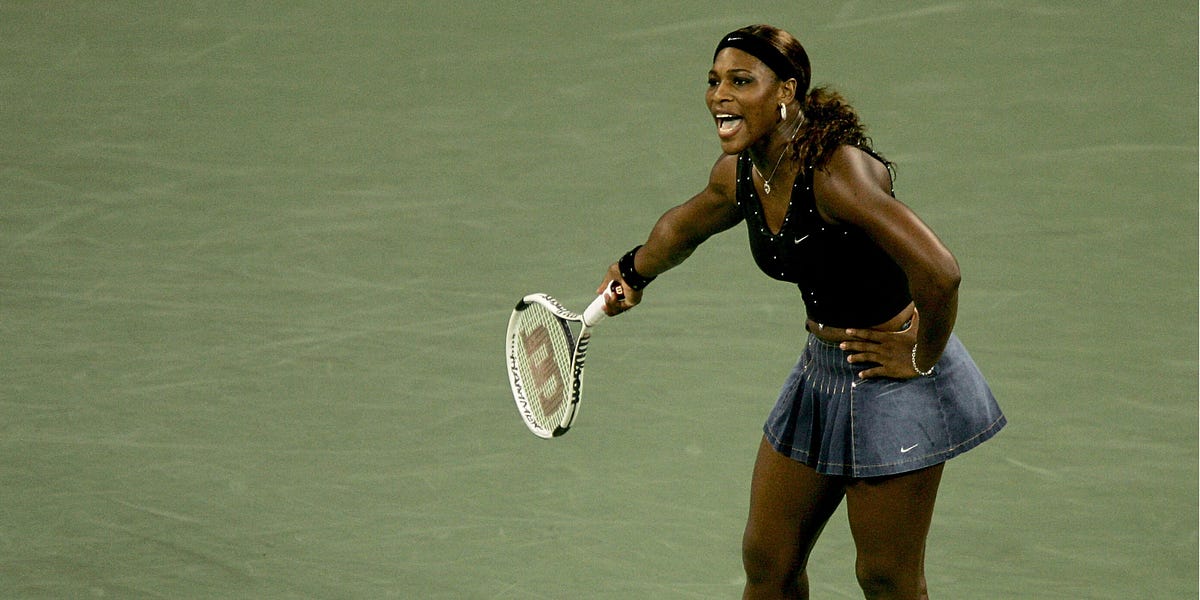
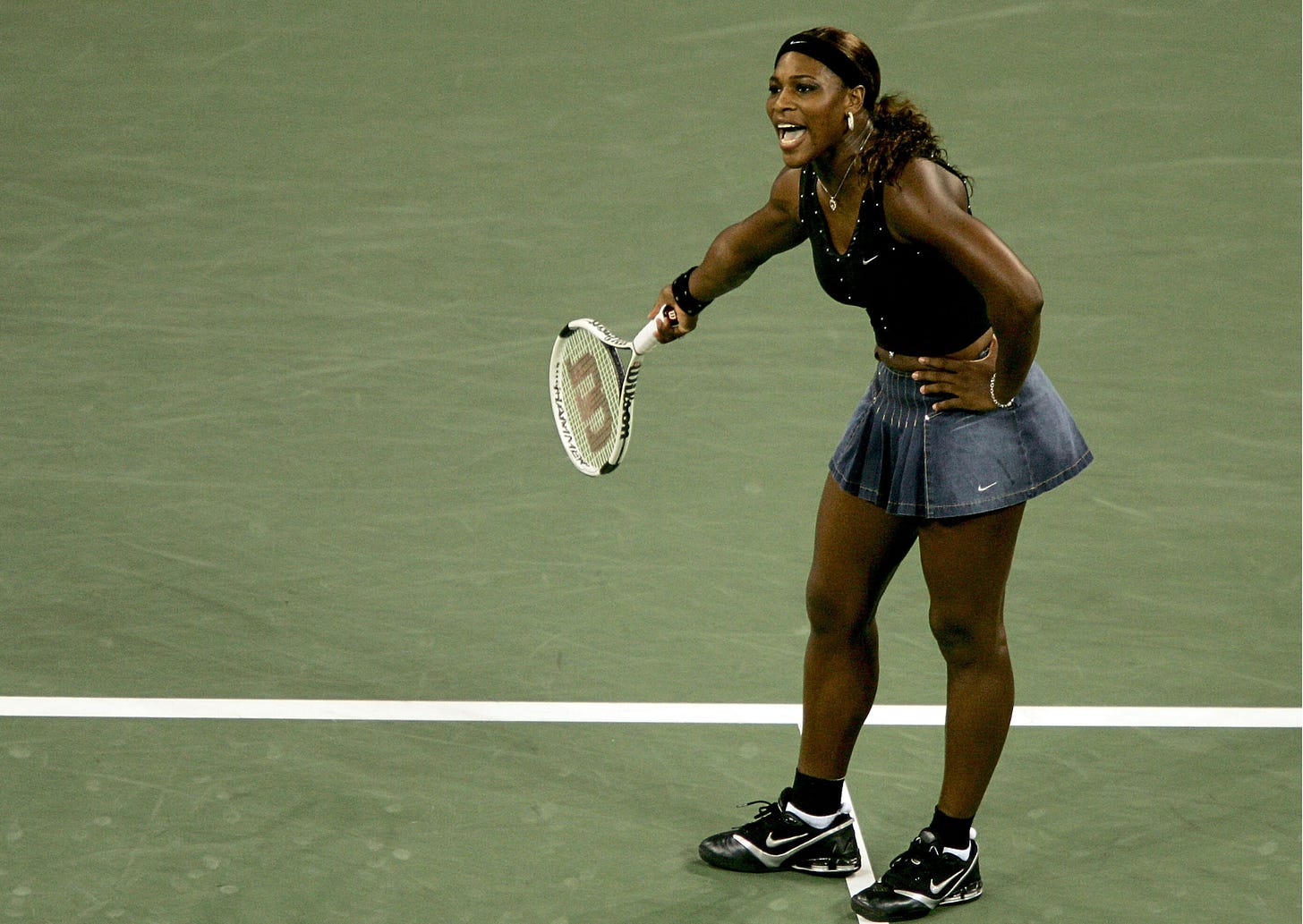
During the 2004 US Open, Serena Williams received four shockingly bad line calls during the decisive third set of her quarterfinal match against Jennifer Capriati.
Fans and commentators were outraged. Balls that were clearly in by a few inches were being called out, again and again. Everyone at home knew the calls were wrong.
Immediately after the match, Williams was issued an apology, and the umpire was dismissed. But 21 years later, the impact of this controversy is still being felt. Fans at home knew the calls were so bad because the TV production crew was utilizing a new technology called Hawk-Eye. Within seconds, a 3D model of the ball’s flight path was recreated through live animation, showing whether the ball was in or out in real-time.
The US Open then spent millions of dollars to install Hawk-Eye systems on all of its courts, setting off a chain reaction across professional sports. FIFA now uses the same technology to review goals, penalties, red cards, and offside decisions. The NBA uses it for skeletal tracking and officiating support. MLB even used an automated ball-strike challenge system (ABS) during its All-Star Game last night, and the NFL is officially implementing Hawk-Eye technology to measure first downs starting in 2025.
It’s not hyperbole to say that Hawk-Eye is one of the most important technological innovations in sports history. It has literally changed the game. Rather than relying on humans to make calls with their eyes, optical tracking technology has brought a new level of objectivity and precision to decisions that were once fraught with uncertainty.
Some people may not like it, but it’s only going to become more popular. So for today’s newsletter, we will cover everything you need to know about Hawk-Eye — how the technology actually works, its margin of error, the cost of installation, the company’s ownership structure, how the business makes money, and so much more. Let’s go.
Technology
Deltatre’s Endeavor Acquisition and the Race for OTT Supremacy
In a bold move to consolidate its position as a leader in live streaming and over-the-top (OTT) technology, Deltatre has announced its acquisition of Endeavor Streaming, a subsidiary of Endeavor Group Holdings, Inc., in a deal finalized in July 2025. This strategic union merges two industry stalwarts, combining Deltatre’s legacy in sports data and video […]

In a bold move to consolidate its position as a leader in live streaming and over-the-top (OTT) technology, Deltatre has announced its acquisition of Endeavor Streaming, a subsidiary of Endeavor Group Holdings, Inc., in a deal finalized in July 2025. This strategic union merges two industry stalwarts, combining Deltatre’s legacy in sports data and video streaming with Endeavor’s expertise in premium OTT platforms. The move underscores a growing trend in the digital media sector: the consolidation of fragmented vendors into end-to-end solutions providers. Here’s why this merger matters—and what it means for investors.
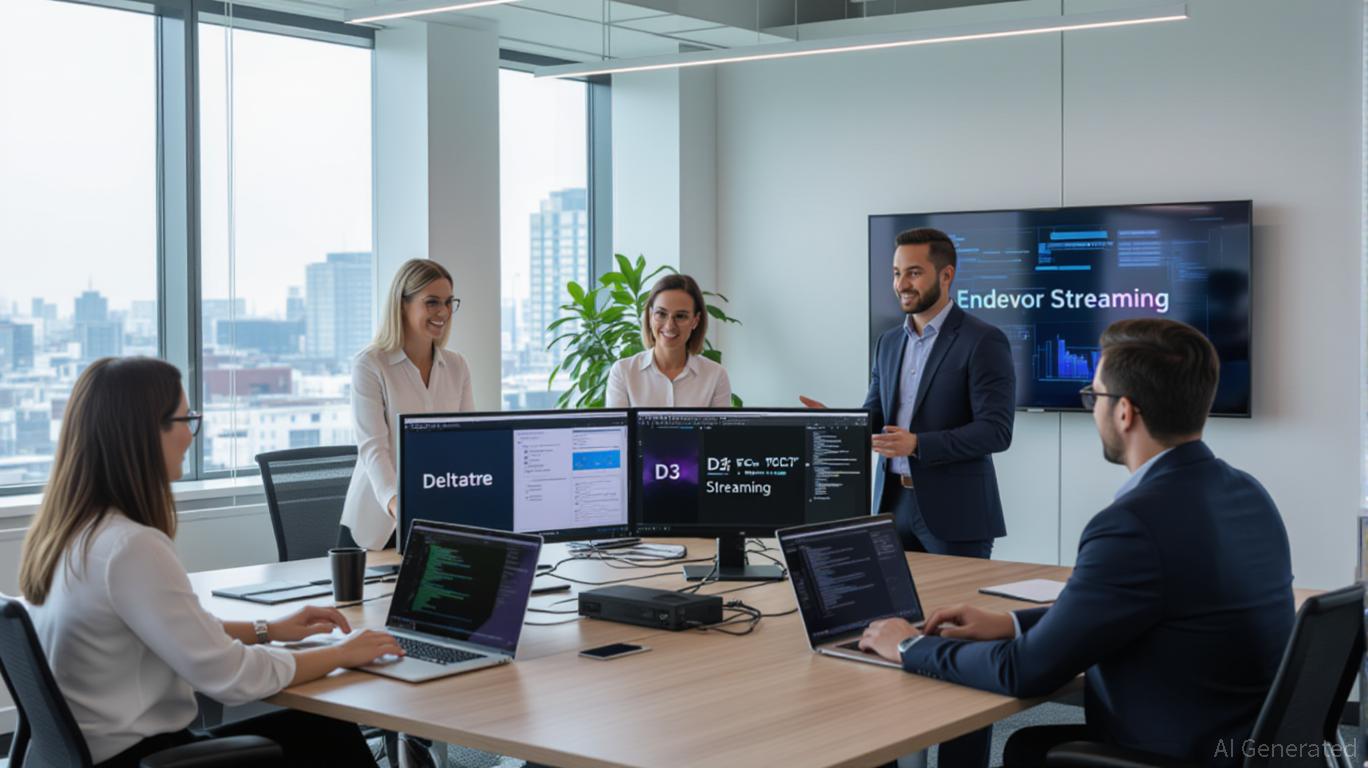
The Synergy of Strengths: A Technical Powerhouse
Deltatre’s product suite—D3 VOLT (a modular platform for live and on-demand content), FORGE (a cloud-native content management system), and AXIS (sports data and graphics)—already powers some of the world’s most demanding live events, from UEFA’s Champions League to MLB’s broadcasts. Endeavor Streaming’s VESPER platform, meanwhile, is the engine behind services like UFC FIGHT PASS and LIV Golf’s OTT offerings, specializing in monetization and global distribution.
The integration of these technologies creates a unified platform capable of handling everything from live event production to subscriber management, content delivery, and data-driven audience engagement. Clients like the NFL, NBA, and UEFA will no longer need to stitch together solutions from multiple vendors, reducing operational complexity and costs. For Deltatre, this means a broader addressable market: while it once focused on backend systems for large clients, the combined entity can now serve mid-sized leagues and regional broadcasters seeking turnkey OTT solutions.
Dominance Through Scale and Reach
The acquisition also amplifies Deltatre’s geographic footprint. While Deltatre’s roots are in Europe and North America, Endeavor Streaming’s presence in Asia and the Middle East—where OTT adoption is surging—expands its reach into markets like India, the UAE, and Southeast Asia. The merged company now boasts a client roster spanning 30+ countries, with contracts worth billions in recurring revenue.
Moreover, the deal aligns with the industry’s shift toward “direct-to-consumer” (D2C) models. Traditional broadcasters and sports leagues are increasingly launching their own OTT platforms to bypass cable distributors and capture subscription fees directly. Deltatre’s ability to offer a full-stack solution—content creation, streaming infrastructure, analytics, and monetization—positions it as the go-to partner for this transition.
Why Investors Should Take Note
The acquisition isn’t just about technology—it’s about capturing a multi-billion-dollar opportunity. According to market research, the global OTT streaming market is projected to grow at a 10.5% CAGR, reaching $258 billion by 2027. Deltatre’s move to consolidate its position ahead of this surge is a textbook example of strategic foresight.
For investors, the key takeaway is this: Deltatre is no longer just a niche player in sports tech—it’s now a full-stack provider in one of the fastest-growing segments of the digital economy. While the company remains privately held, its success could ripple through publicly traded competitors and partners. For instance:
– Adobe (ADBE): Its Document Cloud and Creative Cloud tools are often used in content creation workflows that Deltatre supports.
– Roku (ROKU): As Deltatre’s clients launch more OTT channels, Roku’s platform becomes a distribution partner of choice.
– Silver Lake (SLG): The private equity firm that acquired Endeavor Group earlier in 2025 stands to benefit from Deltatre’s valuation growth.
Risks and Considerations
No deal is without risks. Integration challenges could delay the promised synergies, and regulatory hurdles in key markets (e.g., GDPR in Europe) may complicate data management. Additionally, Deltatre’s reliance on large clients like the NFL could expose it to revenue concentration risks if a major contract is lost.
Investment Takeaways
- Buy into the OTT trend: Allocate capital to companies enabling D2C transitions, such as cloud infrastructure providers (AWS, Microsoft Azure) or analytics firms (Palantir).
- Monitor Deltatre’s public partnerships: Even as a private company, its collaborations with public tech firms could hint at future IPO plans or strategic investments.
- Watch for industry consolidation: Deltatre’s move may trigger copycat acquisitions in adjacent sectors like virtual reality streaming or AI-driven content recommendation systems.
In closing, Deltatre’s acquisition of Endeavor Streaming is more than a merger—it’s a declaration of intent to dominate the next era of live streaming. For investors, the question isn’t whether to bet on OTT’s growth but how to position themselves to profit from it. Deltatre’s strategic play offers a blueprint for success in this high-stakes race.
Technology
Friedkin Forms Pursuit Sports to House Soccer Clubs, Hunt Big 4 Team
Billionaire Everton FC and AS Roma owner Dan Friedkin has formed a new sports-team group, Pursuit Sports, to manage his soccer teams while actively hunting for a franchise in one of the big four North American leagues. Friedkin, who also owns AS Cannes of France, will announce the formation of Pursuit Sports later Wednesday, naming […]

Billionaire Everton FC and AS Roma owner Dan Friedkin has formed a new sports-team group, Pursuit Sports, to manage his soccer teams while actively hunting for a franchise in one of the big four North American leagues.
Friedkin, who also owns AS Cannes of France, will announce the formation of Pursuit Sports later Wednesday, naming former Clearlake and Fenway Sports Group executive Dave Beeston as Pursuit’s CEO.
“The intention has been to form a parent company that would do two things: provide operational excellence—amplify our operations for the clubs we own now—and evaluate opportunities to grow,” Beeston said on a video call. “When I wake up I am thinking about how I am helping Roma, Everton, Cannes get to where they want to get to … and at the same time thinking about growing the company through acquisition.”
Growth seems to be top of mind for Friedkin. The billionaire was one of four finalists to buy the Boston Celtics this year and has held discussions with the NHL about bringing an expansion team to Houston. “Truthfully, there’s a focus on the next thing we do—in North America and not soccer would be my guess,” Beeston said. “We are actively evaluating a few opportunities right now across the sports that you would think. Our focus in the short term and medium term is teams. Sports is the last must-see viewing opportunity. We want to be where the eyeballs are.”
The creation of Pursuit Sports formalizes the big-game hunting instincts of Friedkin. The 60-year-old businessman made his now $8.2 billion fortune on the strength of his family’s Toyota dealership network, which he took over in 1995. Over time, Friedkin expanded into luxury resorts and golf courses, and got exposure to team sports though naming right deals that slapped the Toyota brand on the Houston Rockets arena and FC Dallas and San Antonio FC stadiums.
The leap into team ownership came in 2020, when Friedkin, with children Ryan, Danny and Corbin, bought AS Roma for €591 million, or $701 million at the time. In 2023 they bought AS Cannes, once one of France’s top clubs but long stuck in the country’s fourth tier, for an undisclosed amount. Last year the family swooped in to buy Premier League club Everton for a reported price greater than $500 million after that club’s failure to close a buyout by Miami’s 777 Partners.
Friedkin hired Beeston in February to head what has now become Pursuit Sports. Beeston is best known for a 12-year run at Fenway Sports Group, where he rose to chief strategy officer, overseeing FSG’s mergers & acquisitions efforts, including the purchase of the Pittsburgh Penguins. He left FSG to join Chelsea FC owner and private equity giant Clearlake Capital in August last year, but Boston-based Beeston missed operations work—and the commute to LA didn’t help. A December meeting that ran to more than five hours of conversation with the Friedkin family led to the switch.
Beeston is quick to note that the formation of Pursuit Sports isn’t to create a multi-club hierarchy where lower clubs feed players up to higher clubs. Club management and player decisions will remain separate from each other and led by the local executive slates. “We’re focusing on ways we can scale where appropriate,” Beeston said.
What might that look like? Beeston suggests the success of FSG could be a road map. “One of the companies I oversaw by the end of my tenure was Fenway Sports Management, which was selling sponsorships for the Red Sox, NESN, Liverpool, Penguins, PGA Tour, Boston Common Golf. The more you can scale that, it doesn’t sacrifice anything, because it drives incremental revenue.”
One example: Submarine advocacy group BuildSubmarines.com expanded a high-profile Red Sox sponsorship across more FSG properties, looping in RFK Racing to brand a car for NASCAR’s New Hampshire race last year, for instance.
Another operational benefit can come from sharing technical and strategic resources among clubs. Friedkin recently bought Insight Sport, a London soccer sports tech business that is the first non-team asset housed in Pursuit Sports. While Insight’s purchase price isn’t publicly disclosed, the business is very profitable, pulling in revenue of £332,500 ($445,000) last year, about half of which was net profit, according to a financial disclosure filed in the U.K.
Beeston declined to discuss potential purchases in NHL, NBA, NFL or MLB, other than to note the family probably prefers control stakes compared to limited partner interests. “It would be silly to rule anything out, but our focus is more on areas we can control, because we intend to be the best operators,” he said, adding, “We got to prove it still.”
Of course, it’s not always simple: AS Roma fans protested the American ownership this past season after the club won just three of its first 14 matches, falling to 15th in the Serie A table before recovering to close the season in fifth place. Similarly, Everton seemed destined for relegation after a poor start to the Premier League before finishing 13th, two slots better than the season before Friedkin bought the club.
“I don’t know if I’ve ever seen fan bases pop champagne bottles for ownership groups, but if they begrudgingly say, ‘These guys have been good for our club, they’ve backed up what they said they were going to do,’ then that’s a massive win for us,” Beeston said. “These sports teams have souls you really need to nurture.”
-

 Technology3 weeks ago
Technology3 weeks agoPet fitness and wellness trends for a healthier and happier dog
-

 College Sports3 weeks ago
College Sports3 weeks agoWAC to Rebrand to UAC, Add Five New Members in 2026
-

 College Sports3 weeks ago
College Sports3 weeks agoA new era of Dickinson hockey begins behind the bench – The Dickinson Press
-

 Motorsports2 weeks ago
Motorsports2 weeks agoWhy Cosmetics are Making Up for Lost Time in Women’s Sports
-

 Motorsports2 weeks ago
Motorsports2 weeks agoTeam Penske names new leadership
-

 Sports1 week ago
Sports1 week agoNew 'Bosch' spin
-

 Youtube2 weeks ago
Youtube2 weeks ago🚨 BREAKING: NBA MVP Shai Gilgeous-Alexander signs the RICHEST annual salary in league history
-

 Sports1 week ago
Sports1 week agoE.l.f Cosmetics Builds Sports Marketing Game Plan Toward Bigger Goals
-

 College Sports2 weeks ago
College Sports2 weeks agoMSU Hockey News – The Only Colors
-
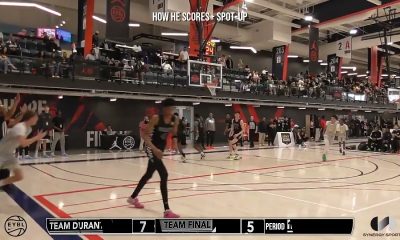
 College Sports2 weeks ago
College Sports2 weeks agoIU basketball recruiting



























